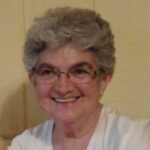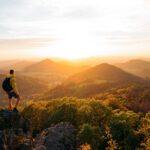Learning a New Way of Seeing
Finding Myself at Home in Faraway Countries
From the foothills of the Andes to the skyscrapers of New York City, a young teacher learns valuable human life lessons through a diversity of cultures, food, languages and customs.
There is something so valuable that I learned over the years.
Instead of identifying with who I thought I was, I now recognize myself as a member of the human family, and I see the Universe as my home.
I was born in Argentina
The second port city of Argentina is Rosario, where I was born.
Five aunts and two uncles raised me, all of them in their twenties and thirties. Each one of them, in their own way, gave me their best education. Until now, many years later, I can feel their guidance, and in some way, their protection.
My primary education was in an all-girls Catholic school.
Summer vacation took me to Bariloche to visit my parents. My father was stationed there at a military base. There, a brother and a sister were born. At that time Bariloche was still a small touristic town in the Andes. I loved visiting in the summer.
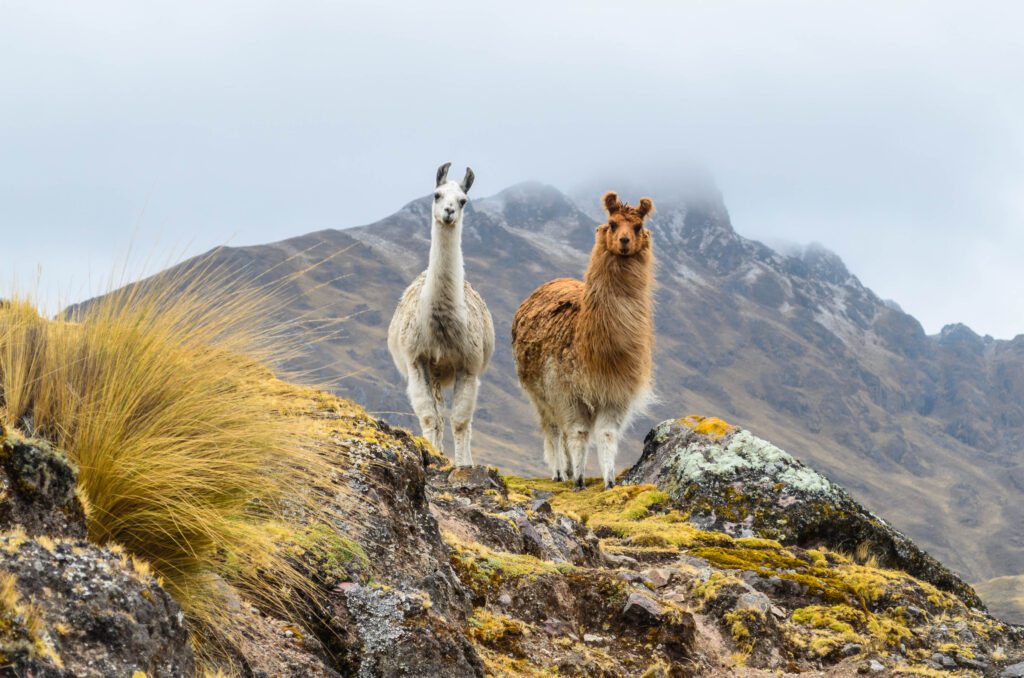
Ten years passed by, and I was reunited with my family in Mendoza where my father join a regiment in the valley of Uspallata. We lived in the foothills. The landscape was arid, cold, wild, and beautiful. At my first encounter with snow, I think I experienced bliss for the first time. It was a kind of ecstasy. I couldn’t believe how the landscape could turn all white. Beautiful white, beyond description.
To leave behind a big city and my beloved aunts to live in a valley in the mountains was a very big change. It was painful, but at the same time, now I realize, it helped me to know and be open to another social environment.
Life in the valley
Our social circle was very reduced to the military families and the cooperative, from where we got all we needed: food, clothing, doctors and medicines.
The provincial school was the place where I met the town people: the children. When I turned 14, I was sent to a boarding school in the city. Again, I was with nuns and girls.
It’s amazing now to look back and to see how reduced was my social milieu.
After five or six years in that school I received my degree in teaching, and I decided to go to teach in a rural school in Cacheuta.
Cacheuta was a town with hot mineral springs in the foothills of the Andes. A very small town. The school was a one-classroom building.
The students were goat shepherds
During the summer vacation I went to my family in the city of Mendoza. I do not remember now, how or why I became friends with a group of medical students all interested in social and spiritual subjects. And that changed my whole life.
One of those students introduced me to my spiritual path, and after a year, I decided to explore living in a community of Cafh.
Cafh is a global spiritual community, and participants live in all walks of life all around the world. But there are also small “communities” of members who decide to live together in a life of work, prayer, meditation and spiritual studies.
It was going to be for a year to see and try if that life was my “vocation” my “call “. I was 24 years old.
Today, I’m telling you my experiences…. 56 years later! As you can see, I stayed a very long time.
My first year I came to know a group of fellow “students”, who were my same age and social background. As I remember now, those first days and months and years were filled with manual work in the garden, the kitchen, and later in the school.
First experiences with diversity
In the school I worked as a teacher. Those days were happy days filled with learning experiences in all these areas. Of course, that learning sometimes was hard or difficult because in between was my personality or “my way” that I learned to try to control to have a smooth communication and a good relationship.
One year later someone from Chile came to live with us in Argentina. She was my age, full of lively energy, and the funniest thing between us was to discover that our Spanish was different. I mean, very different. We both believed we spoke Spanish, that Spanish was our native language. But how many words and expressions were so different!
The Spanish in Chile is different from Argentina
Chile is the country neighbor of Argentina. It takes 45 minutes by plane to cross the Andes from the capital of Chile and land in Mendoza, Argentina . Could it be we have a different way to use Spanish?
We liked to tease each other while washing the dishes: She would say “Please can you pass the virutilla” and I would not know what that was. So, we would run to get the dictionary from the Spanish Academy to check if that word existed, and most of the time she was right. But not with virutilla: it turns out it was a colloquial way of naming a sponge.
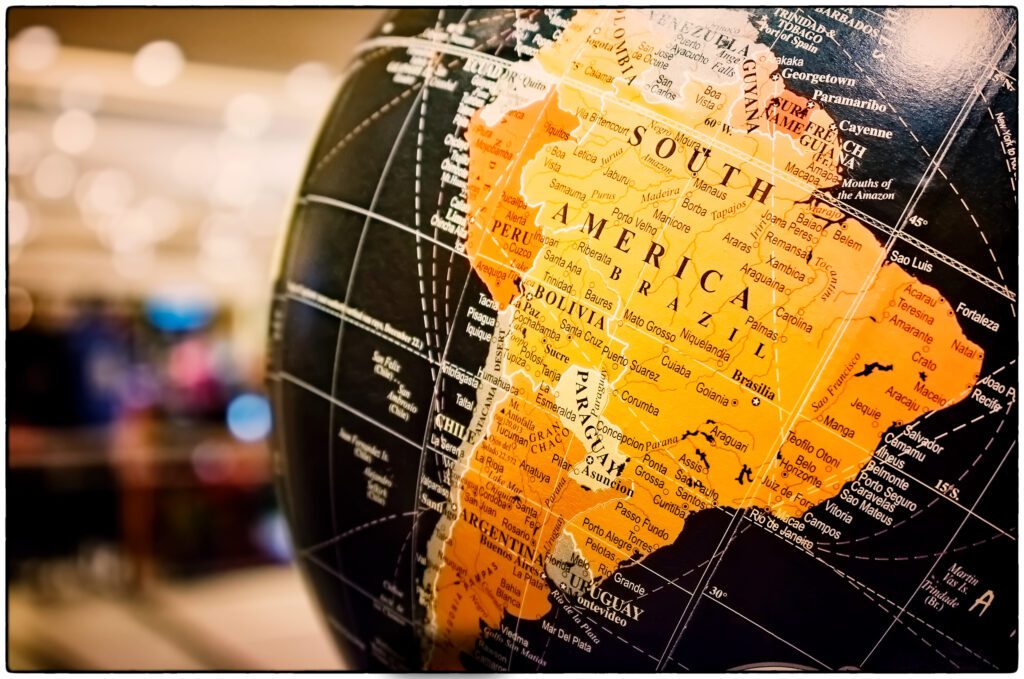
With time we discovered that not only our Spanish was different, but the way we learned history also was different.
We had such rich and funny conversations, checking the different ways our cultural heritage was seen between our two countries.
My relationship with my Chilean companion opened my social circle. And this was just the beginning of an unimaginable social expansion in my consciousness.
Two months later a group of teachers went to help another of our communities in Colombia.
Learning to make arepas from Colombia
They were so happy with the new adventure that they sent us long letters describing landscapes and social costumes. They even sent recipes to make arepas and how to serve them. Arepas, for us to understand what it was, was the bread that we used to serve with meals. We liked them, so more recipes and ideas as how to eat them were sent to us by mail.
In those time email did not exist.
Their letters described our heroes of the South American revolution from another point of view.
So, by now I was no longer, only, an Argentinian citizen. I was beginning to be a citizen of the world.
Diversity expanded by social context
I started recognizing my neighbors and I started to identify with their customs. Chile and Colombia were now part of my social landscape.
But that was not all that happened.
Another member of the community came to work with us in the school. I learned that she was from a Jewish family. And even more: her parents had been in the concentration camps during WWII.
Being raised, myself, in a very Catholic family, I knew very little about the Jews, less of the horrors of concentration camps. I had read Viktor Frankel, but now I had an almost firsthand experience.
And my social circle now welcomed the Jewish. I learned about their celebrations, the use of the menorah and the dreidel. During Passover we served latkes and matzah.
After seven years in this community, I went to another community in another country. This time it was Brazil.
And Brazil was so diverse
Another very different culture!
For the first time in my life, I met black people. Very beautiful people. The first time I saw them I thought that they walked like dancing, very proud and happy.
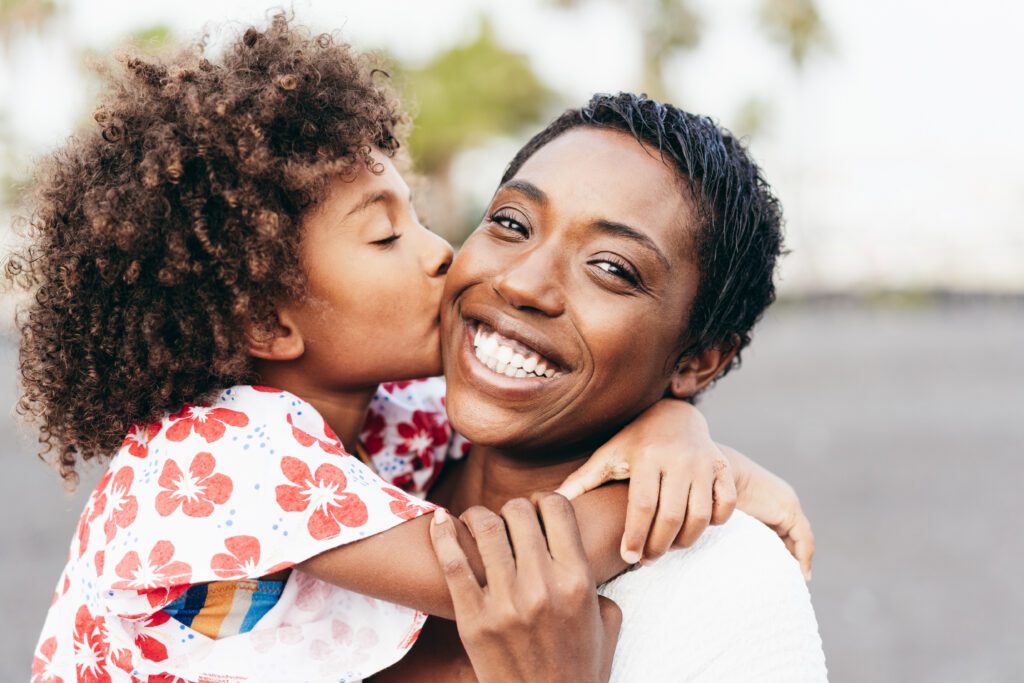
Later I also got to know those living in poverty.
By now, my social milieu changed completely.
Studying Portuguese, I learned a new culture.
Their history and geography were totally different from my little and beautiful valley by the Andes in Argentina.
Brazil, the Bahia, the ocean, the Amazon: everything was beautiful. For the very first time I saw the ocean, I heard its waves, walked on a sandy beach. My first time at a beach!
From mountain girl to beach girl
I was a mountain girl. I was. And now I became a beach girl.
From my companions in Brazil I learned to prepare and enjoy feijoada, a cultural meal often accompanied by caipirinha, a very good drink.
The most beautiful thing I learned from Chile, Colombia, Argentina and now Brazil, was that their people suffered for social and economic reasons, all of them. And most of them decided to be useful, to learn and to work for their social and spiritual unfolding. And above all, they learned how to be happy, to sing and to dance. To write poetry and to share their sorrow and their happiness.
Sometimes this was expressed in songs and dances.
Two years I was in Brazil, while I was waiting for my papers from the embassy to allow me to enter the United States of America.
Off to the USA!
It was the year 1978 when I arrived in California.
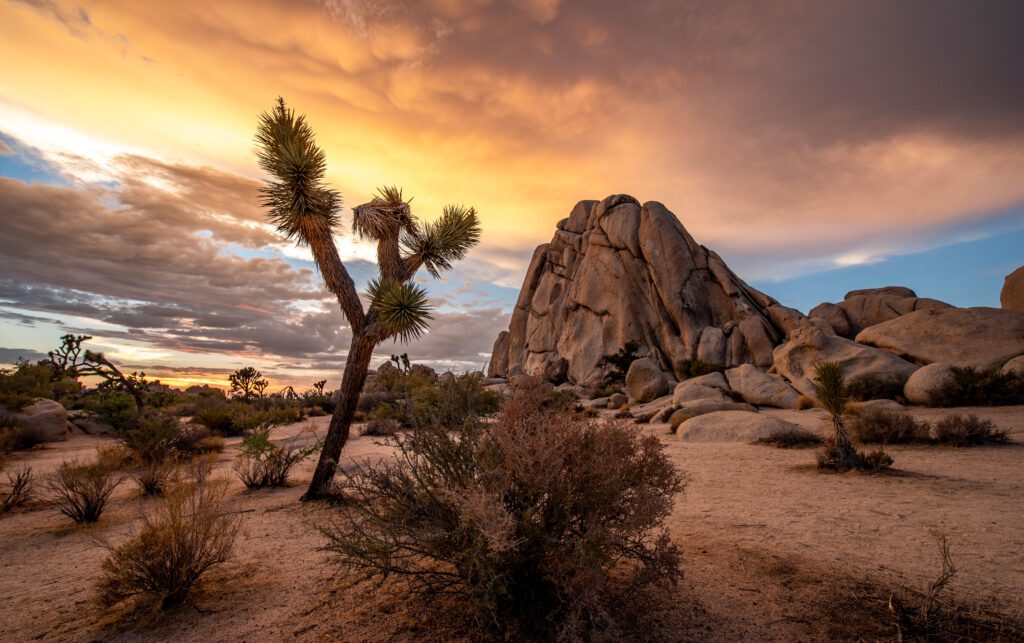
The community that I was joining was in the south of California, the town, now a city, was Wildomar. Very near the Mohave Desert.
The community owns a day care center, and as I started to help taking care of children, I started to learn English.
That was my main occupation in the years to come. It was not easy, but I finally succeeded. Not perfect, but enough English to be able to communicate. And, in the meantime, another set of social and cultural norms entered into my consciousness through the diversity I experienced.
What the children taught me
I learned, with the children, to celebrate very meaningful holidays. Each one filled with traditional art and crafts and special dishes that accompany them. According to the school district calendar, each month has a very special celebration that sometimes occupies the whole month with song, dances, games and, above all, art expressing the meaning of what was celebrating.
February for example, was the month dedicated to Love. For people of different ages this has different meanings, but for the little ones Love was expressed in friendship.
The month of July was summer in the northern hemisphere
Even weather and seasons become a teaching in diversity, as summer and winter are the opposite times in the northern and southern hemispheres.
July presented the biggest celebration of all: Independence Day. This is a national celebration that ends in an amazing display of fireworks.
August is summertime heat with watermelons, lemonade, and ice cream to enjoy.
October was the month that brought Halloween. A celebration very like the day of the dead of Mexico. How the children liked to dress up and ask for candies!
November brought Thanksgiving, perhaps the most meaningful of all.
So much to be grateful for during Thanksgiving
The children liked stories about the turkey, and learned the chicken dance, but the teachers also guided them to the idea of being thankful. To this purpose the teachers helped to write and illustrate thank you cards for the families and even for pets.
In the community following the tradition of most of our families, we prepared a grand Thanksgiving table. Each one of us chose to prepare a dish that would make us famous in our small supportive group.
It was around this time that a member of Cafh from Mexico came to be part of our community.
She was delightful, she liked to talk and she could speak English and Spanish!
From then on, I learned of the colorful customs and traditions of Mexico. I learned and grew enjoying, more and more, the characteristics of another culture. The people I found to be hardworking, gentle and very much loving every experience of life.
Learning about Mexico
From Mexico I learned the fascinating variety and ways to prepare and present food. What a diversity of flavors and ingredients!
I learned how many dishes are prepared during the celebration of the Día de los Muertos: el pan de muerto, calaveritas de azucar, among others.
Then, the unexpected happened.
Diversity is a great teacher
Another community in New York, in Yorktown to be more specific, needed a teacher. I’m a teacher and by now I can speak English. So, off I went to New York, to Yorktown Heights, a small town one hour north of the greatest city in the world, New York City.
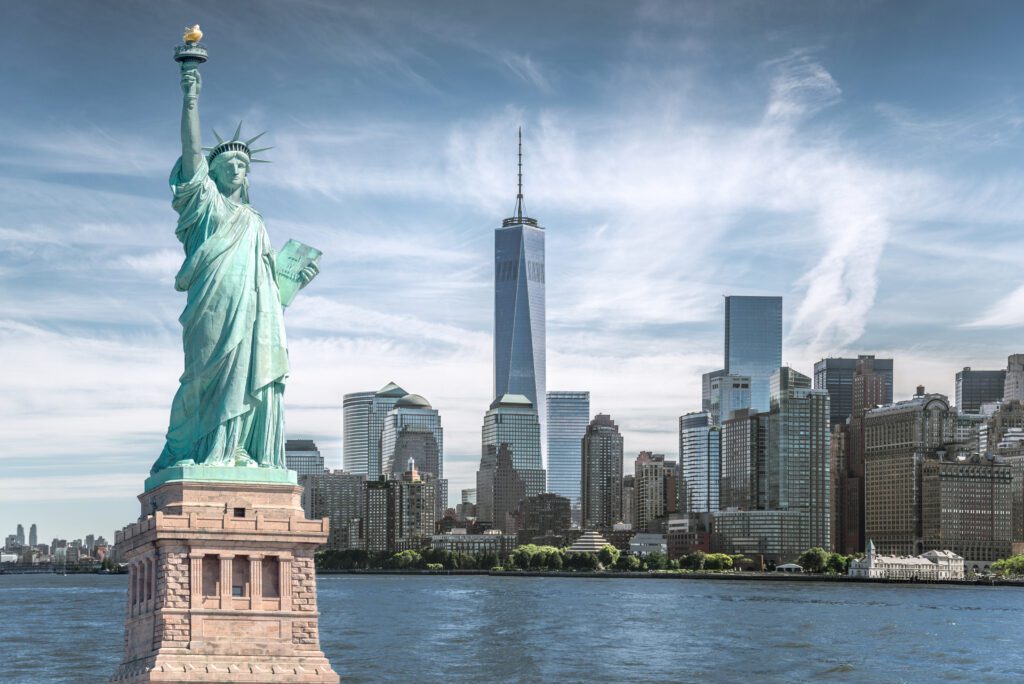
All what I learned in California was my support and my strength, but the two cities have a totally different social landscape and social characteristics.
One example among many:
New York celebrates St. Patrick’s Day, in a big way. The children love this celebration, and the idea that a leprechaun may be hanging around the school always brings excitement. Many nice stories about this tradition make the day a bright green day.
So once again, I had the opportunity to expand my social boundaries.
Diversity of food
I learned about the Irish, their history and legends, from the many Irish Americans I came to know. And, perhaps most valuable of all, I learned to bake the famous Irish soda bread.
The diversity of the world’s food continues to amaze me.
For a while, in our school, I was called “Miss California”, because my name was hard to pronounce by the little children, and they knew I was from California.
And then again, after some years in Yorktown, for a very special and dear reason, I moved to Florida.
Learning to love alligators: Now that’s diversity!
There I learned to love the alligator, to find beauty in the swamp where I saw flowers of different colors like one that is pink. Sweet pink in the swamp!!
And I learned to bake very well the legendary Key Lime Pie.
Florida, I believe, is going to be my last destination. I’m old now, but this, in no way stops me from enjoying the opportunities to learn more and continue to expand my social milieu.
Life in Florida
Here in Florida, most of all, I learned to appreciate the diversity in the cultural backgrounds found in my neighborhood: lovely people from Puerto Rico, Cuba, Jamaica, Haiti, Brazil, India, China and more.
One of my neighbors from Puerto Rico gave me the recipe for Sancocho. She laughs, saying that she needed no recipe to do a very good Sancocho.
Another neighbor promised to take me to Jamaica when Covid disappears for good.
I saw beautiful decorations in front of the houses of Indian neighbors during the festival of Diwali, and I was served chai tea with halwa, a sweet carrot or pumpkin cookie.
Famous Cuban sandwiches
Now at home, in the community, I can prepare the famous Cuban sandwich for a happy lunch. We learned from a street vendor all the ingredients that the sandwich must have. So much we can learn from ordinary folk we meet in our neighborhood!
This joy that I recognized in all my learning experiences is my way to be grateful.
I am so grateful to all the experiences I had through this wonderful global spiritual community, which gave me the opportunity to expand my social context in such a way where human differences melt away, leaving me in an extraordinary spiritual state of participation with the whole world and our gloriously diverse human family.
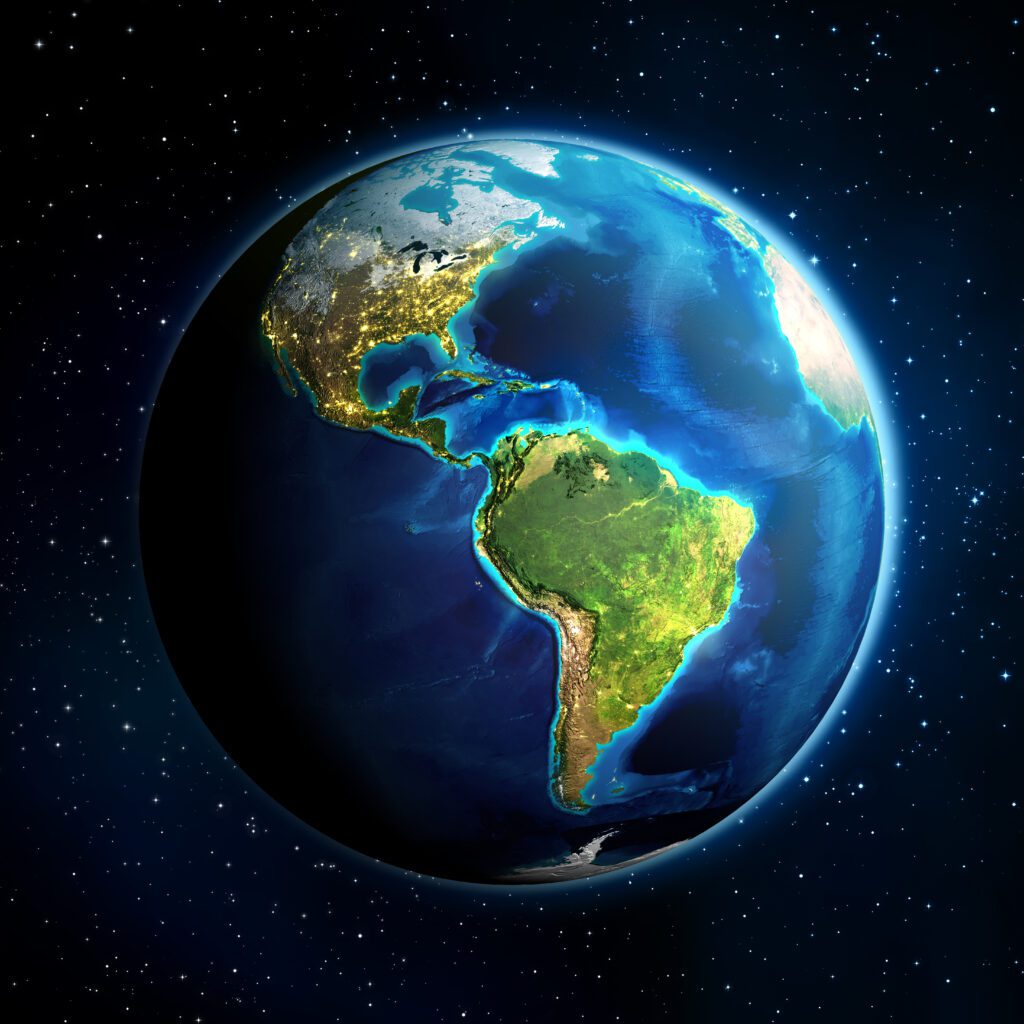
About the Author(s)
Felicitas Castex is a retired elementary school teacher. She now enjoys walking and taking pictures of nature. She is continuously inspired by the messages revealed in all the life forms around us.
